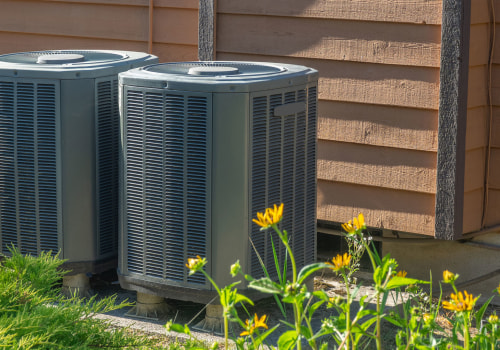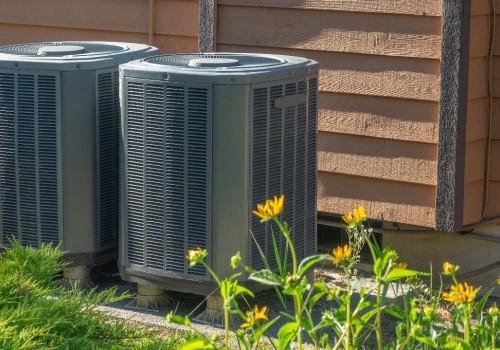Recognizing Dirty HVAC Air Filter Signs and Finding Reliable HVAC Companies Near Me for Effective Solutions
Finding symptoms of a dirty filter involves looking for unexpected spikes in energy bills, uneven temperatures throughout the home, and worsened allergy problems. Examine filters for visible dirt or color changes; clean filters typically appear white. Regular replacement every 1 to 3 months helps maintain air quality and energy efficiency. While seeking the best HVAC companies nearby, evaluate their reputation through online reviews, service offerings, and technician experience. Trustworthy companies provide warranties and stand behind their work. Gaining more insights on HVAC maintenance proves beneficial as you move forward.
Key Takeaways
Keep an eye on energy bills for spikes, which may signal issues with dirty filters impacting system performance.
Notice uneven temperatures and heightened allergy symptoms, frequently resulting from clogged air filters.
Regularly inspect filters every 30-90 days; replace them if dirty, damaged, or discolored.
Look into local services through online reviews and inquire about services and technician credentials.
Select companies offering warranties and guarantees to ensure quality work and customer satisfaction.
Common Symptoms of Dirty Filters
You may notice several signs indicating it's time to replace your filter. Start by observing your utility bills; a sudden increase could mean a dirty HVAC air filter symptom causing your system to work harder. Uneven temperatures throughout the house can also be a signal, with some areas feeling stuffy while others are too cold.
Another warning sign is a rise in respiratory issues or allergy symptoms. An unclean filter can gather all kinds of debris, potentially causing health concerns for you and your loved ones. If sneezing or headaches become more common, it might be a result of poor conditions from a neglected filter.
When visible grime collects on the filter, it's a definite signal that a replacement is due. Filters generally need to be inspected and switched out every one to three months, depending on how often they are used and the surrounding environment. Overlooking these warning signs can lead to more significant complications later, so staying on top of filter care is vital for keeping your home comfortable.
Impact on Air Quality
To improve your home environment, it's essential to follow basic upkeep practices. Check your filter often, ideally every couple of weeks, and replace it every month or so, based on how much it's used and the type of filter you have. If you have pets or live in a particularly dusty space, more frequent changes may be necessary. Keeping the air passages clean helps reduce harmful elements in your home.
You might also want to consider purchasing a better filter that catches finer particles. This can greatly improve your surroundings and provide a safer space for your household. Remember, looking after your filter is an easy way to improve the air you breathe and protect your well-being.
Power Consumption Concerns
Blocked filters can significantly hinder the function of your device. When they are filled with grime, your equipment has to work harder to move air throughout your home. This added effort leads to more power usage, which directly impacts your energy costs. By keeping filters clear or replacing them regularly, you can enjoy noticeable savings over time.
Furthermore, the electricity your system uses affects the planet. An ineffective unit demands more power, often relying on nonrenewable resources, which increases greenhouse gases and enlarges your carbon footprint. By keeping your filters clean, you not only lower your expenses but also make a positive environmental impact.
How to Inspect Your Filter
Regularly checking your air filter is vital for maintaining performance and comfort in your home. Knowing how to inspect your filter can save you from costly repairs and ensure clean air circulation. Here are some effective inspecting techniques and maintenance tips you can follow:
1. Turn Off Your System: Before you start, always turn off your HVAC unit to ensure safety during your inspection.
2. Remove the Filter: Carefully take out the filter from its slot. Check for any visible dirt or debris on the surface.
3. Inspect for Damage: Look for rips, tears, or holes in the filter material. A damaged filter won't perform effectively.
4. Check the Color: A clean filter is usually white or light-colored. If it appears dark or clogged, it's time to replace it.
Selecting the Right Company
Picking the right provider is key to your comfort. Start by researching their standing; browse reviews and ask friends or family for their opinions. A solid reputation generally reflects reliable service and happy customers.
Next, consider the variety of services they offer. Opt for a company that handles everything from routine checks to urgent fixes. Having one point of contact can save you hassle when problems unexpectedly occur.
Also, look into their certifications and expertise. A seasoned company with experienced staff ensures a high standard of work. Don’t forget to ask about guarantees; a trustworthy business backs its work, reassuring you.
Frequently Asked Questions
How Often Should I Replace My Filter?
Replace filters every one to three months. This schedule depends on filter lifespan and maintenance routines. Regular checks ensure optimal airflow, helping keep systems running smoothly.
What Types of Filters Are Available?
Selecting filters offers various choices, including fiberglass, pleated, and HEPA. Each option differs in effectiveness and material, impacting air quality and system performance. Choose one that aligns with specific requirements.
Can a Dirty Filter Cause My Equipment to Break Down?
Regular filter maintenance promotes system longevity, whereas neglecting this task leads to increased repair expenses. Prioritizing preventative care allows the system to operate efficiently and saves money over time.
Are There Ways to Clean Reusable Filters at Home?
Yes, basic upkeep involves rinsing them with water, scrubbing gently with a soft brush, or soaking them in a mild detergent solution. Make sure they are fully dry before placing them back in your device.
How Can I Know if My Unit Is Too Large or Too Small?
Signs of incorrect sizing include uneven temperatures and unexpectedly high running costs. Consulting professionals for an in-depth evaluation can help identify sizing issues and improve overall functionality.
Learn more about HVAC Care from one of our HVAC solutions branches…
Filterbuy HVAC Solutions - West Palm Beach FL
1655 Palm Beach Lakes Blvd., Ste 1005 West Palm Beach, FL 33401
(561) 448-3760
https://maps.app.goo.gl/VarpgNZnxuPQuW8A7



